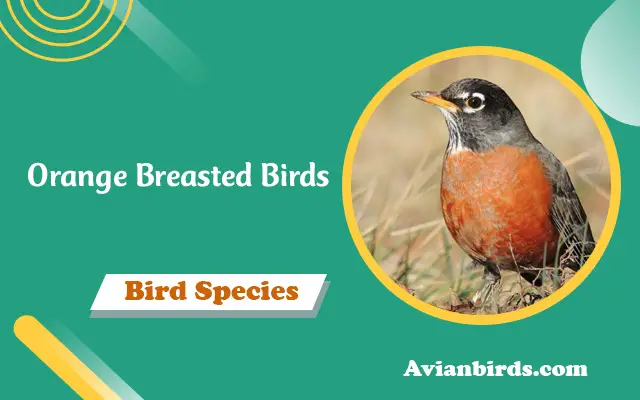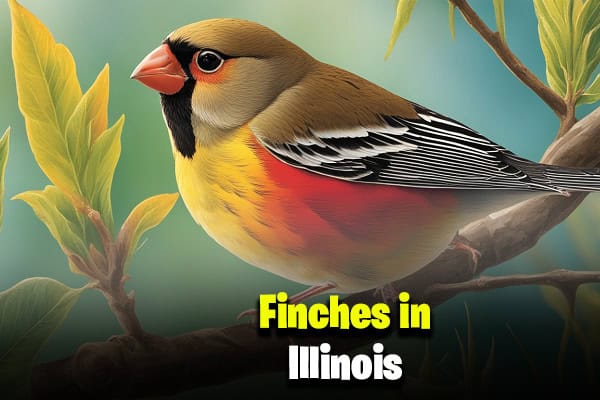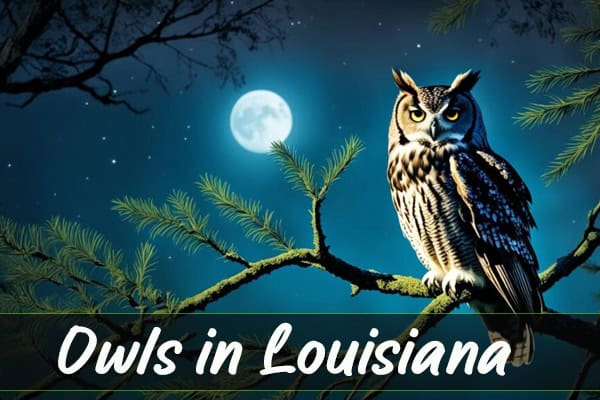13 Types of Orange Breasted Birds (ID Guide)
Ever wondered how many orange-breasted birds live in North America? This guide will show you many stunning species. We’ll look at birds like the Eastern Bluebird and the Baltimore Orioles. Each one has special traits that make them fun to watch.
Let’s explore the world of orange-breasted birds together. We’ll learn how to spot them, where they live, and what they do. These birds are not only pretty but also important to our environment. Come see why they are a treasure in our yards and beyond!
Importance of Bird Coloration
Understanding bird coloration shows us how colors help birds survive. Colors like orange help birds hide from predators and attract mates, and these colors are key to their survival.
Functions of Coloration in Birds
Bird colors serve many purposes, such as:
- Camouflage: Helps birds hide from predators.
- Courtship Display: Bright colors attract mates.
- Social Signaling: Colors show dominance and health.
These functions help us see how colors aid in their survival and evolution.
Why Orange is Significant
Orange in bird coloration is very interesting. Orange comes from carotenoids, making many birds look vibrant. It shows health and vitality.
Birds like the Orange-breasted Bushshrike show how diet and genetics mix to create their colors. Orange helps us tell birds apart. It shows their beauty and role in nature.
Looking into bird colors shows how beauty helps them survive and connect. The orange color is especially important. It shows how much we can learn from these amazing creatures.
| Color Type | Source | Function | Example Species |
|---|---|---|---|
| Melanin | Browns, Blacks, Greys | Camouflage & Patterning | Common Raven |
| Carotenoids | Reds, Yellows, Oranges | Attraction & Health Signaling | American Robin |
| Structural Colors | Iridescent Colors | Social Signaling & Attraction | Common Grackle |
Overview of Orange-Breasted Birds
Orange-breasted birds are a colorful sight in North America. They have bright colors and live in many places. Each bird is special, with orange feathers that stand out.
Birds in North America have many orange colors. Baltimore Orioles are famous for their bright orange and black feathers. Bullock’s Orioles add color to eastern Idaho with their vibrant feathers.
1. American Robin
American robins, with their orange breasts, appear in summer and make us happy with their songs. Orchard Orioles, which arrive in April, add color to Northeast Texas lakes.
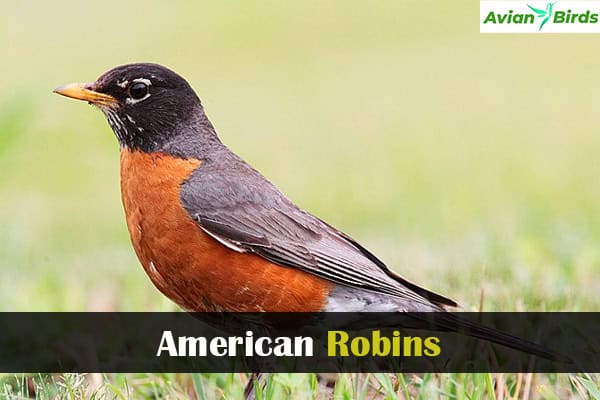
There’s more beauty to see. American Avocets have unique colors in northwest Montana. Say’s Phoebes are fun to watch with their gray and orange feathers. Hooded Orioles in Mexico have stunning orange feathers.
2. Barn Swallow

Barn Swallows, with their blue and orange feathers, are pretty in South Dakota. Orange-crowned Warblers have different looks in different places. The Pacific Coast has a bright subspecies, while Alaska and Canada have a more subtle one.
Orange-crowned Warblers nest on the ground to avoid predators. Males sing in different ways to talk to each other. They migrate early and go far north in winter.
This overview prepares us for more about these birds. They are colorful and important in nature. Orange-breasted birds in North America are a joy to watch and study.
Related: Small Birds With Yellow Chests
3. Eastern Bluebird
The Eastern Bluebird, known as Sialia sialis, is a favorite among bird watchers. Its bright colors and charming ways make it fun to spot. The blue and orange feathers make it stand out.
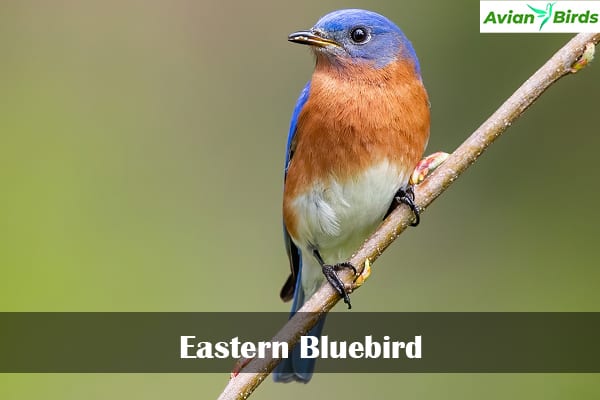
Description and Identification
Males have a deep blue back and a red throat and breast, making them easy to see. Females are less flashy, with grayish upper parts and a soft orange-brown breast.
They are smaller than American Robins. This size difference helps in identifying them.
Habitat and Behavior
Eastern Bluebirds live in open fields and parks. They love places where they can find insects and berries. Farmers like them because they eat pests.
They nest in boxes and old holes. The female lays 3-7 blue eggs for 20 days. They often mate for life and raise many broods.
Despite past declines, nesting boxes have helped their numbers grow.
4. Western Bluebird
The Western Bluebird, known as Sialia mexicana, is a bird that catches our eye. It has bright colors and fun behaviors. Because of their looks, we can tell males from females. Knowing about their looks and what they eat helps us understand their lives.
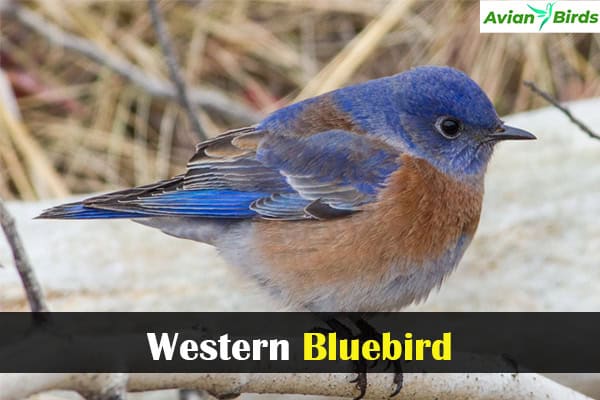
Males vs. Females
Male Western Bluebirds are bright, with blue heads and backs and orange chests. Females are less bright, with gray-buff feathers and a light orange breast. Young birds look like females but have spots and streaks.
Feeding and Migration Patterns
Western Bluebirds mainly eat insects on the ground. They sit on branches and then drop down to catch their food. In the off-season, they join groups to find more food.
Migration patterns vary for Western Bluebirds. Some stay put, while others move south for winter. They like open woods, farmland, and places that burn sometimes. They live from sea level to high mountains.
| Characteristics | Male | Female | Juvenile |
|---|---|---|---|
| Coloration | Shiny blue with rust-orange vest | Gray-buff with pale orange wash | Similar to female; spotted back and streaked breast |
| Body Size | 15 to 18 cm (5.9 to 7.1 in) | 15 to 18 cm (5.9 to 7.1 in) | 15 to 18 cm (5.9 to 7.1 in) |
| Nesting Behavior | Nests in cavities or boxes | Nests in cavities or boxes | Nests in cavities or boxes |
| Diet | Insects, berries | Insects, berries | Insects, berries |
5. Black-headed Grosbeak
The Black-headed Grosbeak, known as Pheucticus melanocephalus, is a standout songbird. It has bright colors and special features. Adults have an orange-cinnamon body and a black head. Their wings are black and white.
Females and young males have warm brown on top and soft orange or buff on their chests. They might have faint streaks.
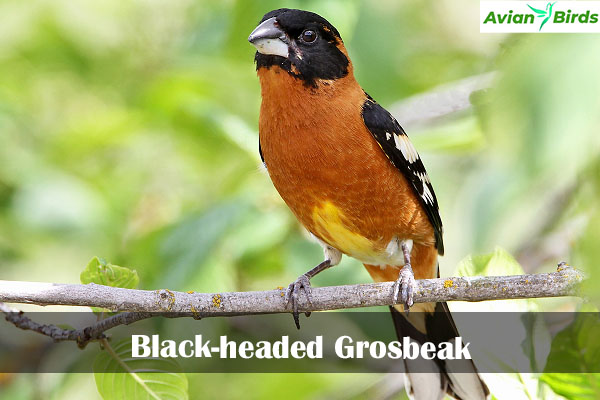
When flying, this bird shows off bright yellow underwings. They live in mixed woodlands, mountain forest edges, and backyards. They like tall trees and diverse undergrowth for cover and food.
Black-headed Grosbeaks are great at finding food. They go to feeders for sunflower seeds. They also search through thick foliage for insects and seeds. Males sing beautiful songs in spring and summer from the trees.
These birds are doing well, with stable or growing numbers. Groups like the American Bird Conservancy help keep them safe.
| Characteristic | Adult Male | Female/Immature |
|---|---|---|
| Coloration | Rich orange-cinnamon, black head, black-and-white wings | Brown above, warm orange or buff on breast, streaked sides |
| Feeding Behavior | Visits feeders for sunflower seeds | Gleans insects and seeds in foliage |
| Habitat | Mixed woodlands, mountain forests, backyards | Desert stream thickets, gardens |
| Singing Style | Rich, whistled lilt from treetops | Similar, may also sing in dense foliage |
| Population Trend | Stable or increasing | N/A |
6. Cooper’s Hawk
The Cooper’s Hawk, or Accipiter cooperii, is a great example of bird adaptability and hunting skill. It has a mix of physical traits that make it a top predator and interesting for bird watchers.
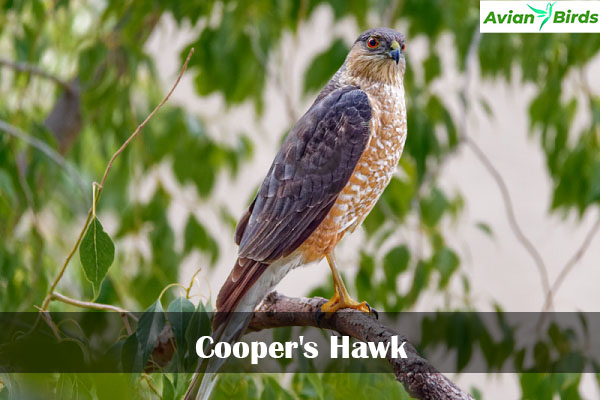
Physical Characteristics
Adult Cooper’s Hawks have gray backs with reddish bars on their chests. This makes them blend in while hunting. Young hawks have brown tops and white bottoms with brown streaks, looking different as they grow.
These hawks are about the size of a crow. But, males are smaller than females. Males weigh 7.8 to 14.5 ounces, while females weigh 11.6 to 24.0 ounces. Adult females are 14.6 to 15.3 inches long, showing a clear size difference.
Cooper’s Hawks mainly hunt small to medium birds like doves and woodpeckers. Their special body shape helps them fly fast and catch prey, unlike Sharp-shinned Hawks, which have a rounder head.
These hawks live in many places, from Canada to Mexico. They even nest in cities, showing they can adapt to humans. When they migrate, they travel far, reaching Honduras and Panama.
7. Sharp-shinned Hawk
The Sharp-shinned Hawk is the smallest hawk in North America. It has grey upperparts and an orange chest. It’s easy to spot because of its size and tail shape.

Identification Tips
Here are some ways to tell if you see a Sharp-shinned Hawk:
- Adult “Northern” Sharp-shinned Hawks have blue-gray upperparts and dark tail bands. They also have narrow red-orange breast bars.
- Young “Northern” Sharp-shinned Hawks look brown with yellow eyes and thick brown streaks.
- They fly in a unique way. They flap their wings a few times and then glide. Because of their small size, this looks a bit shaky in windy weather.
There are different types of Sharp-shinned Hawks. Each looks a bit different:
| Subspecies | Distinctive Features |
|---|---|
| Madrean | Pale underparts with chestnut-washed belly and chestnut leg feathers |
| White-breasted | Unmarked white underparts and a contrasting white cheek |
| Plain-breasted | Variable coloration ranging from heavily barred to very pale |
| Rufous-thighed | Nearly black on the back with rich chestnut feathers on legs |
| Caribbean | Cinnamon sides of the head with light barring on the breast |
They live in forests and forest edges. They mostly eat small birds, like American Robins. Their unique looks and ways make them interesting to watch.
8. Allen’s Hummingbird
The Allen’s Hummingbird, known as Selasphorus sasin, is a small bird with a bright orange body. It has green on its back. Adult males have a bright orange throat and belly.
Females and young males have a dull green back and pale coppery sides. They look a lot like Rufous Hummingbirds. This makes hummingbird identification tricky.
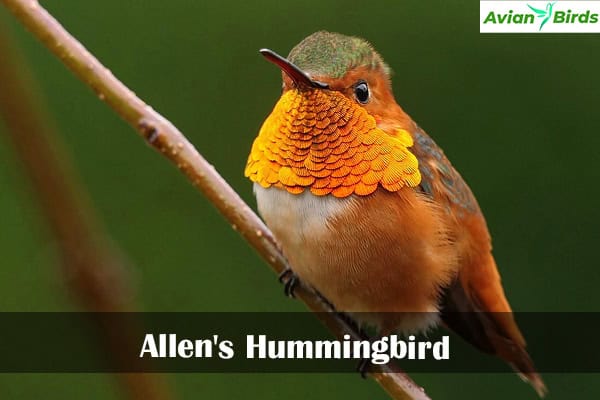
This bird lives in coastal areas from California to southern Oregon. It is bigger than Calliope Hummingbirds but smaller than Anna’s Hummingbirds. It has a straight bill and a long tail.
Adult males have narrow tail feathers with copper below and bronze-green above. Young males have bronze-green backs and paler coppery sides. They also have bronze spots on their throats.
When it’s breeding time, female Allen’s Hummingbirds build nests and take care of eggs and nestlings alone.
Allen’s Hummingbirds are great at flying and catching insects in mid-air. They also drink nectar from flowers. They fly side to side, making a buzzing sound like a bumblebee.
| Characteristic | Adult Male | Female / Immature Male |
|---|---|---|
| Throat Color | Reddish-orange | Dull metallic green |
| Belly Color | Orange | Pale coppery flanks |
| Back Color | Bronze-green | Bronze-green |
| Distinct Features | Eye patch, coppery tail | Subtle coppery eyebrows |
| Breeding Nests | Not involved | Builds nests, incubates eggs |
9. Rufous Hummingbird
The Rufous Hummingbird, Selasphorus rufus, has bright orange feathers and is known for being very aggressive. It fiercely defends its food spots.
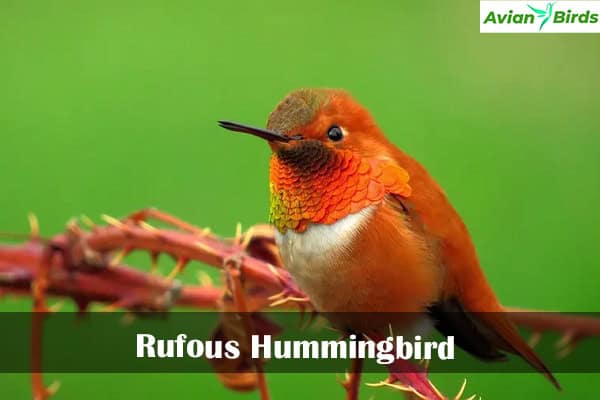
They breed far north and migrate to Mexico. This shows their strength and ability to adapt.
Breeding and Migration
Male Rufous Hummingbirds have bright orange feathers, while females and young males have greenish and rusty colors. They like to nest in open areas, including parks and forests.
They nest as far north as southeastern Alaska. This is the farthest north any hummingbird breeds.
During breeding and migration, males fight to protect their territory. They eat insects and nectar, flying fast. Their migration is about 3,900 miles, going around western North America.
They fly through mountains up to 12,600 feet. They look for flowers with nectar.
In Mexico, they live in shrubby areas and oak-pine forests. They remember where flowers are, helping them on their journey. They can fly up to 52–62 times per second, showing their speed and endurance.
10. Red Knot
The Red Knot, known as Calidris canutus, is a shorebird that changes color with the seasons. These changes help us learn more about them and enjoy watching them.
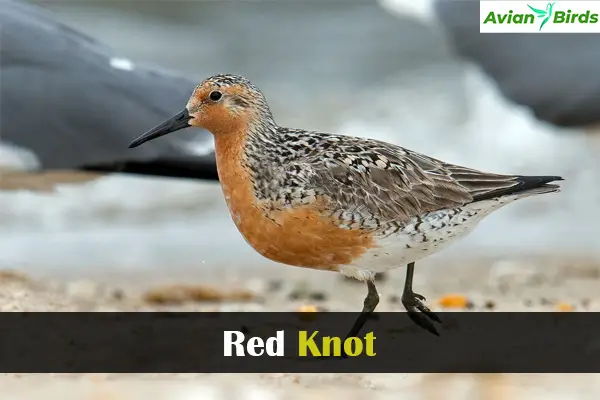
Seasonal Plumage Changes
In the breeding season, the Red Knot has bright orange underparts. This looks amazing against its upper body, which is gold, buff, rufous, and black. This bright look helps them find mates and hide in the tundra.
When it’s not breeding time, the Red Knot looks very different. Adults have gray feathers and patterns on their sides and chest. Young ones have a special scaly look on their back and a white stripe above their eye.
Red Knots like to eat on flat beaches, mudflats, and by lagoons. They pick at the ground for food. They can eat in many places, which helps them on their long migrations.
These birds migrate really far, over 9,300 miles each spring. They go from places like Argentina and Chile to their summer homes. This shows how strong and flexible they are.
| Season | Plumage Description | Habitat |
|---|---|---|
| Breeding | Striking orange underparts, complex pattern of gold, buff, rufous, and black above | Dry, upland tundra areas with sparse vegetation |
| Non-Breeding | Gray above with barring on flanks, faint vertical barring on the chest | Flat beaches, mudflats, lagoons, estuary edges |
| Juvenile | Fine scaly pattern on back, white eyebrow stripe, plump body | Flat beaches, mudflats |
11. Red-breasted Nuthatch
The Red-breasted Nuthatch, known as Sitta canadensis, is a small bird loved by many. It has a bright orange chest and black and white stripes on its head. These birds are often seen moving fast in trees, especially in coniferous forests.

They live in coniferous woods and mountains, liking trees like spruce and fir. In the Northeast, they also like oak and maple trees. They can live in many places in the United States and Canada.
Male Red-breasted Nuthatches have a black cap and a white stripe over their eye. Their colors and active nature make them fun to watch. In winter, they eat more seeds and nuts, visiting bird feeders often.
Even though they like to stay in one place, they can move if it gets too cold or if food is scarce. They move from the north when it gets too hard. They live in many places, from Alaska to Newfoundland and Labrador.
These birds are special because they store food in trees. They also stay with their mate even after the breeding season. This shows their unique way of living.
Even though their numbers are growing, they still face dangers. Outdoor cats and glass can hurt them. We need to protect their homes to keep them safe.
12. Altamira Oriole
The Altamira Oriole, known as Icterus gularis, is the biggest oriole in the U.S. It can grow up to 10 inches long. People in the Rio Grande Valley of Texas often see these birds. They live in Mexico and Central America, liking places with trees and open woods.

Altamira Orioles eat a lot of different things. They eat small fruits, insects, and nectar from flowers. This shows how smart they are and how important they are to their homes.
Female Altamira Orioles make special nests. These nests are long and pear-shaped, up to two feet. They hang them high, sometimes over water, to keep their babies safe.
There are six types of Altamira Orioles, but only one lives in the U.S. This shows how colorful and diverse orioles are. Many types live in North America, adding to the beauty of our birdlife.
| Characteristic | Details |
|---|---|
| Scientific Name | Icterus gularis |
| Size | Up to 10 inches |
| Primary Habitat | Scattered trees and open riparian woodlands |
| Diet | Nectar, fruits, insects, and larvae |
| Nesting | Suspended pear-shaped nests, up to 2 feet long |
| Geographical Range | Southern Texas to Mexico and Central America |
13. Baltimore Oriole
The Baltimore Oriole, known as Icterus galbula, is a bird that catches the eye. It’s about the size of a Red-winged Blackbird but slimmer than an American Robin. Adult males have bright flame-orange underparts and a solid-black head with a white wing bar. Females and young males have yellow-orange chests and grayish heads with two bold wing bars.
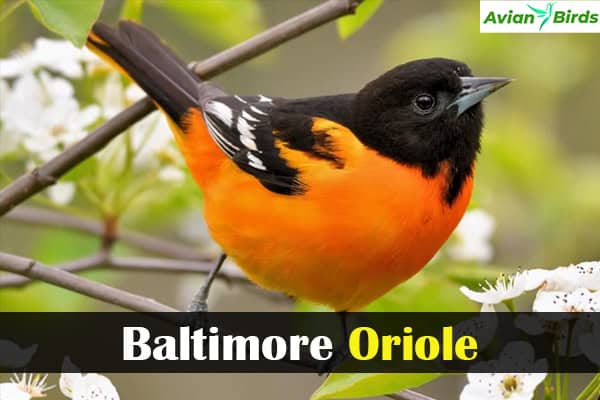
Baltimore Orioles live in eastern North America, in places like open woodlands and orchards. They also like urban parks and backyards with fruit feeders. They live with Bullock’s Orioles in central North America, making hybrid offspring.
These birds migrate in flocks each July and August to warmer places. Some stay in the southeastern U.S. and Gulf Coast during winter. When they return in April, they build hanging nests high up in trees.
Over 50 years, Baltimore Oriole numbers have dropped by 42%. Each brood can have three to seven eggs. The young eat insects, fruit, and nectar, helping them grow.
We can offer them treats like orange slices and grape jelly to attract Baltimore Orioles. Using orange-colored feeders and a bird bath with running water makes our yards more inviting.
| Characteristic | Details |
|---|---|
| Scientific Name | Icterus galbula |
| Size | Similar to a Red-winged Blackbird, slimmer than an American Robin |
| Adult Male Appearance | Flame-orange underparts and black head with a white wing bar |
| Female Appearance | Yellow-orange breast and grayish head with two bold wing bars |
| Habitat | Open woodlands, orchards, river edges, parks, and backyards |
| Migration | Flocks migrate to Central America from July to August |
| Nesting | Hanging nests 25-30 feet above ground, using plant materials |
| Population Decline | 42% decrease over the last 50 years |
Conclusion
Orange-breasted birds add color and variety to our world. They range from the Eastern Bluebird to the Orange-breasted Green Pigeon. Each one is special and plays a role in different places.
This guide helps you spot these birds. Knowing about their homes and how they live makes us appreciate them more. Caring for these birds is important so others can see them too.
Let’s keep watching and learning about these amazing birds. By understanding and protecting their homes, we help them thrive, and birdwatching will always be a joy.
Read More🐦Related Articles:
| Why Do Your Chickens Have Bald Spots |
| Birds with Black Heads |
| Owls In The Family |
| Can Turkeys Fly |
| Can Flamingos Actually Fly |
Frequently Asked Questions
Q1. What are some orange-breasted birds found in North America?
Some common orange-breasted birds in North America are the American Robin, Baltimore Oriole, Varied Thrush, and eastern bluebird.
Q2. How can I identify an orange-breasted bird?
Look for bright orange coloring on the chest, combined with specific traits like body size, beak shape, and wing patterns, which help differentiate species.
Q3. What does an orange-breasted bird symbolize?
Orange-breasted birds often symbolize joy, creativity, and warmth, with some cultures associating them with positivity and new beginnings.
Q4. Why do some birds have orange breasts?
Orange coloring often comes from pigments in their diet, which can help attract mates or camouflage them in specific environments.
Q5. What is the most common orange-breasted bird?
The American Robin is the most commonly spotted orange-breasted bird in North America.
Q6. Where can I spot orange-breasted birds in the wild?
Depending on the species and the season, they can often be found in forests, gardens, parks, and open fields.
Q7. How do I attract orange-breasted birds to my garden?
Offer fruit, berries, or mealworms, and consider birdbaths and nesting boxes to make your garden inviting.
Q8. Are orange-breasted birds rare?
Many orange-breasted bird species are quite common, especially in North America, though rarity can vary by region.
Q9. What do orange-breasted birds eat?
Depending on their species and habitat, most orange-breasted birds enjoy a mix of insects, berries, and fruits.
Q10. Do orange-breasted birds migrate?
Yes, many do migrate, such as the Baltimore Oriole and American Robin, which move to warmer regions during winter.

